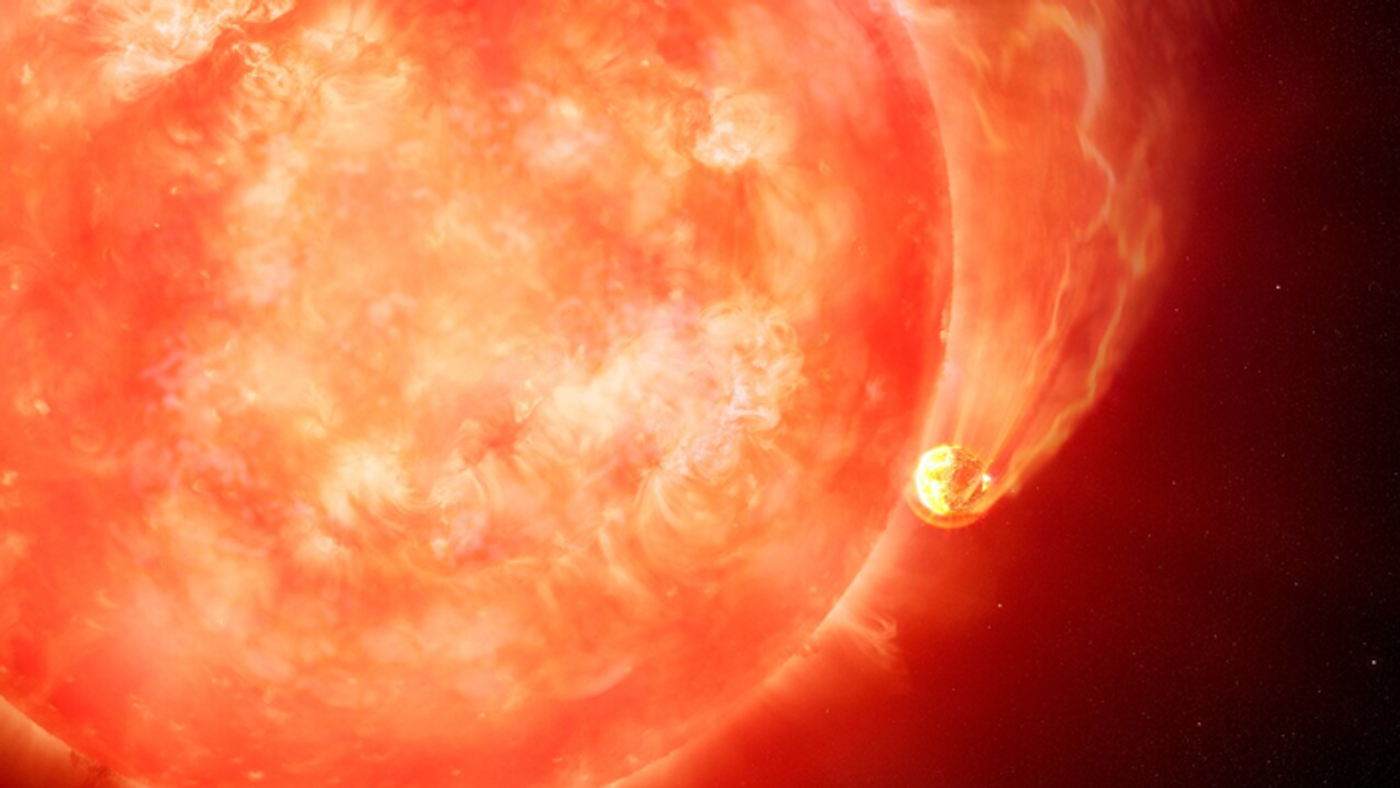Engorged Star Observed Engulfing Planet
Astronomers recently observed a dying, Sun-like star engulfing one of its planets using the Gemini South Adaptive Optics Imager (GSAOI) operated by the National Science Foundation’s NOIRLab, marking the first time such an observation has been made. The results of these observations were recently published in Nature and hold the potential to help scientists better understand the processes that Sun-like stars endure near the end of their life cycles.
Artist rendition of a planet being engulfed by its dying and expanding star. (Credit: International Gemini Observatory/NOIRLab/NSF/AURA/M. Garlick/M. Zamani)
“These observations provide a new perspective on finding and studying the billions of stars in our Milky Way that have already consumed their planets,” said Dr. Ryan Lau, who is an assistant astronomer at NOIRLab, and a co-author on the study.
For the study, the researchers used data from previous claims of the engulfment event, now dubbed ZTF SLRN-2020, along with a myriad of instruments and facilities to confirm the event took place. Evidence for this event was first observed by the Zwicky Transient Facility, then later confirmed by archival infrared data from NASA’s Near-Earth Wide-field Infrared Survey Explorer (NEOWISE).
Multiple observations are common in astronomy prior to confirming the existence of some type of event. However, what makes confirming this engulfing event particularly difficult is that the observations and data could misinterpret it for either a coronal-mass ejection or solar flare. This is why high-resolution and long-term observations are required before such an event can be confirmed.
“Gemini South continues to expand our understanding of the Universe and these new observations support predictions for the future of our own planet,” said Dr. Martin Still, who is the program director of the NSF Gemini Observatory. “This discovery is a wonderful example of the feats we can accomplish when we combine world-class telescope operations and cutting-edge scientific collaboration.”
While supernovae are often attributed as the end result of a dying star, these explosive events only happen with stars approximately five to ten times larger than our own Sun.
In the case of Sun-like stars, the size prevents it from going supernova. Instead, once it runs out of hydrogen to fuel the nuclear fusion within its core, it will start to expand like a balloon called a red dwarf, engulfing everything in its path, including planets. Eventually, this balloon will shed this outer layer leaving a white dwarf behind, which is a very small and very dense star whose glow will be powered by any remaining heat after the star’s death. However, this engulfing process with our Sun isn’t scheduled to start for another few billion years.
What new discoveries will scientists make about dying stars and engulfing planets in the coming years and decades? Only time will tell, and this is why we science!
Sources: Nature, EurekAlert!, NASA, NASA (1)
As always, keep doing science & keep looking up!









